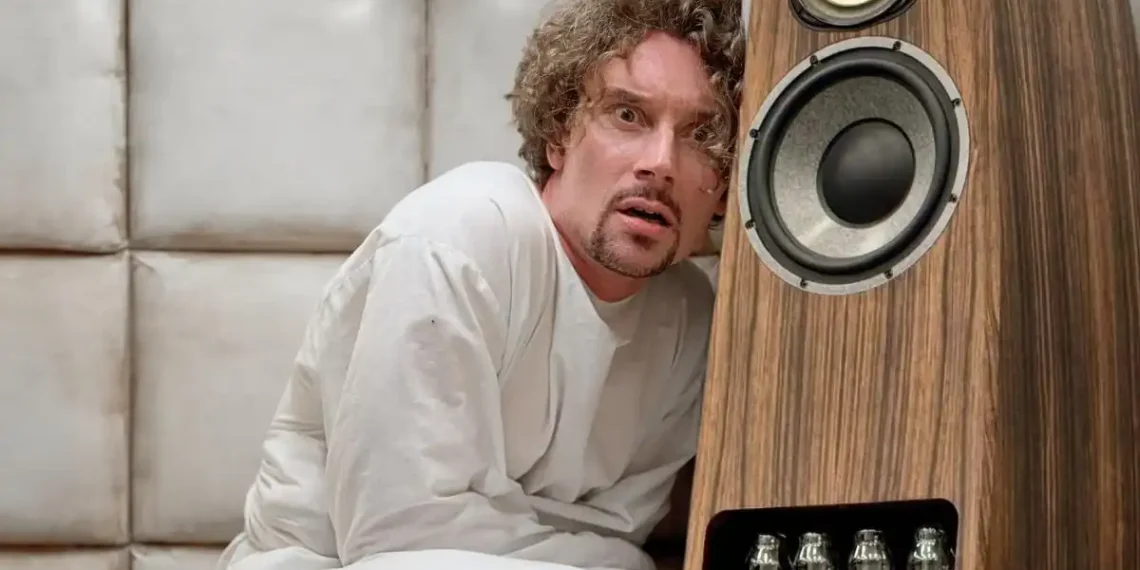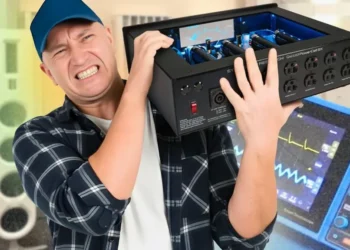25 Songs That Expose Whether Your Room Is Ruining Your Sound
It might not be your gear—it could be your room.
If your music doesn’t sound quite right—boomy bass, dull highs, or muddy mids—you might instinctively blame your speakers or amplifier. But here’s the truth: your room is often the real culprit.
Room acoustics can affect sound more than your actual audio equipment. Things like wall shape, furniture placement, and room materials can distort what you hear. Thankfully, some songs can act as precise tools to diagnose these issues. Here are 25 tracks that do just that—revealing hidden flaws in your listening space.
1. Daft Punk – Solar Sailer (2010)
That synth bass dives below 40 Hz. If the low note at 0:54 fades in some spots and booms in others as you move, you’ve just mapped your room’s standing waves. Listen for the airy pad staying centered—if it leans left or right, your side walls are unbalanced.
2. Massive Attack – Angel (1998)
The iconic rolling bassline hits around 30 Hz. At 1:30, if one note blooms and another vanishes, your room is creating peaks and nulls. Minimal production means any muddiness is all on your space.
3. Lorde – Royals (2013)
With only a dry vocal, finger snap, and a 58 Hz kick, this track is a masterclass in simplicity. Echoes after each snap? Sidewalls need treatment. If the kick lingers too long, you’ve got bass problems. Try collapsing to mono—any stereo sound left is room reflection.
4. James Blake – Limit to Your Love (2010)
At 0:54, a massive 23 Hz sub-bass drop hits hard. If the bass keeps ringing past half a second, you need serious bass trapping. Keep volumes modest to really hear decay.
5. Muse – Hysteria (2003)
This tight bass riff should punch evenly between 73–87 Hz. If one note overwhelms the rest, that’s a modal hotspot. A cheap frequency analyzer can confirm it.
6. Mickey Hart – Umasha (1998)
Descending synth bass walks through the 30–50 Hz range, perfect for exposing room modes. Hand drums spread across the stereo field can highlight any left-right imbalances.
7. Infected Mushroom – Becoming Insane (2007)
Kick drums at 55 Hz should stop before the next one hits. If they blend into a rumble, your room has long decay issues. Pitch-sweeping synths also reveal comb filtering.
8. Béla Fleck – Flight of the Cosmic Hippo (1991)
The low B note at 0:07 (≈31 Hz) is great for testing bass traps. Walk around the room while it sustains—you’ll find peaks and nulls quickly.
9. Thundercat – Uh Uh (2017)
Lighting-fast bass runs expose bass smear. If everything sounds like mush, your low-end is bouncing off hard surfaces. Switch to headphones—if it clears up, you’ve confirmed it’s the room.
10. Chemical Brothers – Das Spiegel (2007)
This track opens with sharp stabs and silence. If those hits echo or trail off, your room’s decay is too long. Hard-panned elements also help test for symmetry.
11. Max Roach – Lonesome Lover (1962)
The shimmering cymbals and soaring sax reveal issues with high frequencies. At 3:05, if the sax makes you wince, flutter echoes are bouncing between untreated surfaces.
12. Suzanne Vega – Tom’s Diner (1987)
Dry mono vocals are perfect for spotting room colorations. Sharp consonants should sound crisp, not smeared. If you hear multiple reflections after clapping, it’s time to treat those walls.
13. Imogen Heap – Hide and Seek (2005)
Layered, processed vocals bloom into a stereo choir. If the image shifts when you move, your absorption is uneven. Headphones first, then speakers—any extra shimmer is your room.
14. AC/DC – Thunderstruck (1990)
The chugging guitar riff lives in the upper mids. If it turns from “ting-ting” to “hiss-hiss,” early reflections are muddying your sound. Swivel your head to hear it.
15. Steely Dan – Gaslighting Abbie (2000)
A mix engineer’s dream, this track covers the full spectrum. If something disappears when you collapse to mono, your room is tilting the tonal balance.
16. Diana Krall – The Girl in the Other Room (2004)
Krall’s voice and piano reveal mid-bass issues. If her voice booms around 160–300 Hz or balloons when you step back, you’ve found a hot spot.
17. Nickel Creek – Reasons Why (2002)
Mandolins and violins scatter transients across the highs. Clap during the solo—if you hear a metallic slap, you’ve got flutter echo.
18. Sufjan Stevens – Death With Dignity (2015)
This hushed mix is a test of detail and noise floor. Crank it up. If the room adds hiss or masks the breathy vocals, your ambient noise or reflections are at fault.
19. Radiohead – The National Anthem (2000)
Dense and chaotic, but every layer should stay intelligible. If instruments vanish when you solo a speaker, side-wall reflections are killing your stereo image.
20. Thievery Corporation – Lebanese Blonde (2000)
The shaker at 0:13 is ideal for testing decay time. If the tail lingers too long, it’s not the mix—it’s your space.
21–25. Additional Test Tracks
Here are five more bonus songs to explore:
- Bjork – Hunter: Spacious and bassy—great for stereo imaging.
- Yosi Horikawa – Bubbles: Ultra-detailed spatial test.
- Fleetwood Mac – Dreams: Natural vocals and tight drum lines expose reverb trails.
- Pink Floyd – Time: Those clock chimes will bounce like crazy in untreated rooms.
- Norah Jones – Don’t Know Why: Piano and vocals will reveal balance and coloration instantly.
Final Thoughts
You don’t need fancy tools to test your room—just the right tracks and your own ears. If your system sounds great in headphones but falls apart in the room, now you know where to look.
With a few acoustic panels and some careful listening, you’ll stop blaming your gear and start enjoying your music the way it was meant to be heard.
This article was rewritten by JournosNews.com based on verified reporting from trusted sources. The content has been independently reviewed, fact-checked, and edited for accuracy, neutrality, tone, and global readability in accordance with Google News and AdSense standards.
All opinions, quotes, or statements from contributors, experts, or sourced organizations do not necessarily reflect the views of JournosNews.com. JournosNews.com maintains full editorial independence from any external funders, sponsors, or organizations.
Stay informed with JournosNews.com — your trusted source for verified global reporting and in-depth analysis. Follow us on Google News, BlueSky, and X for real-time updates.













